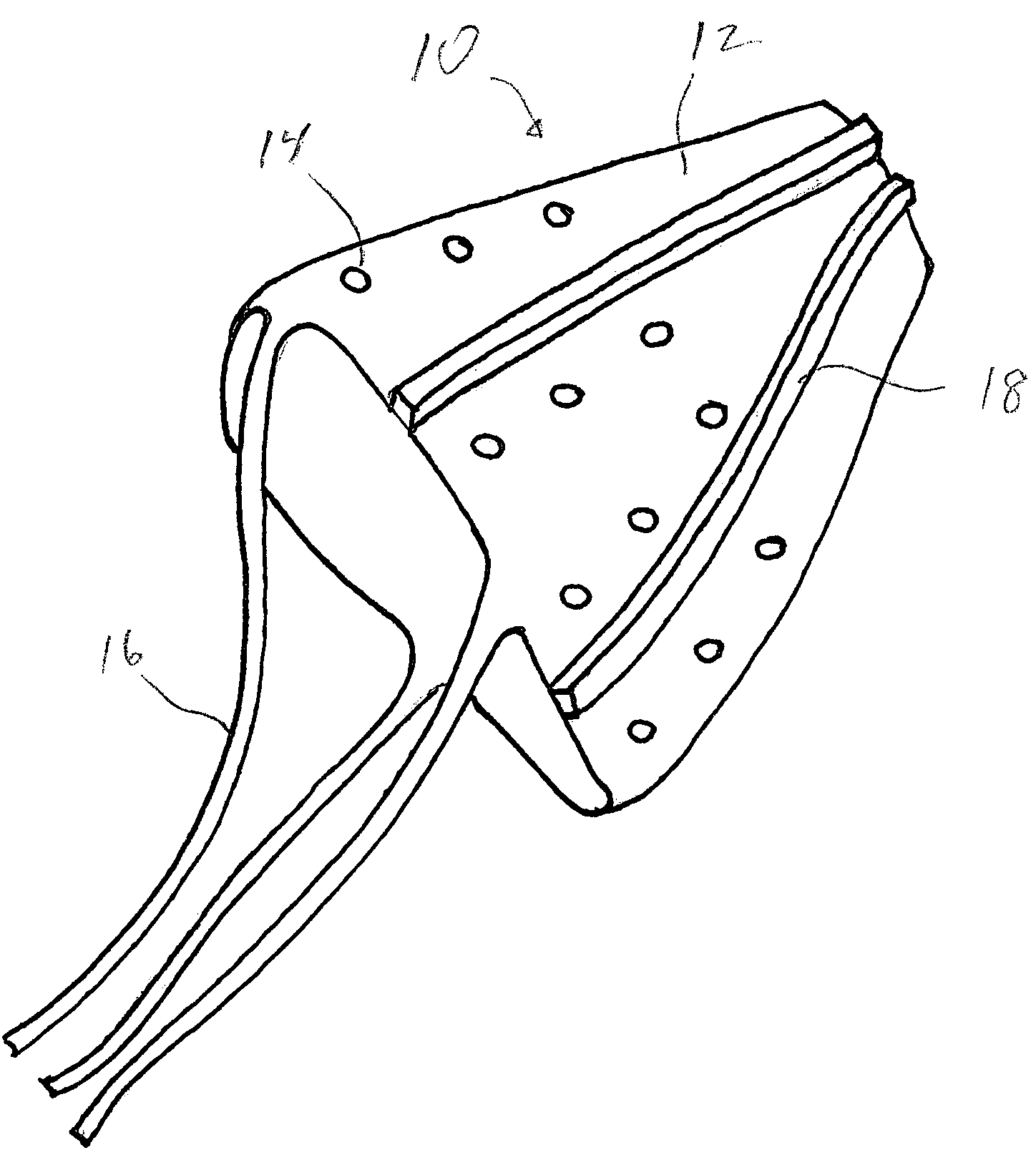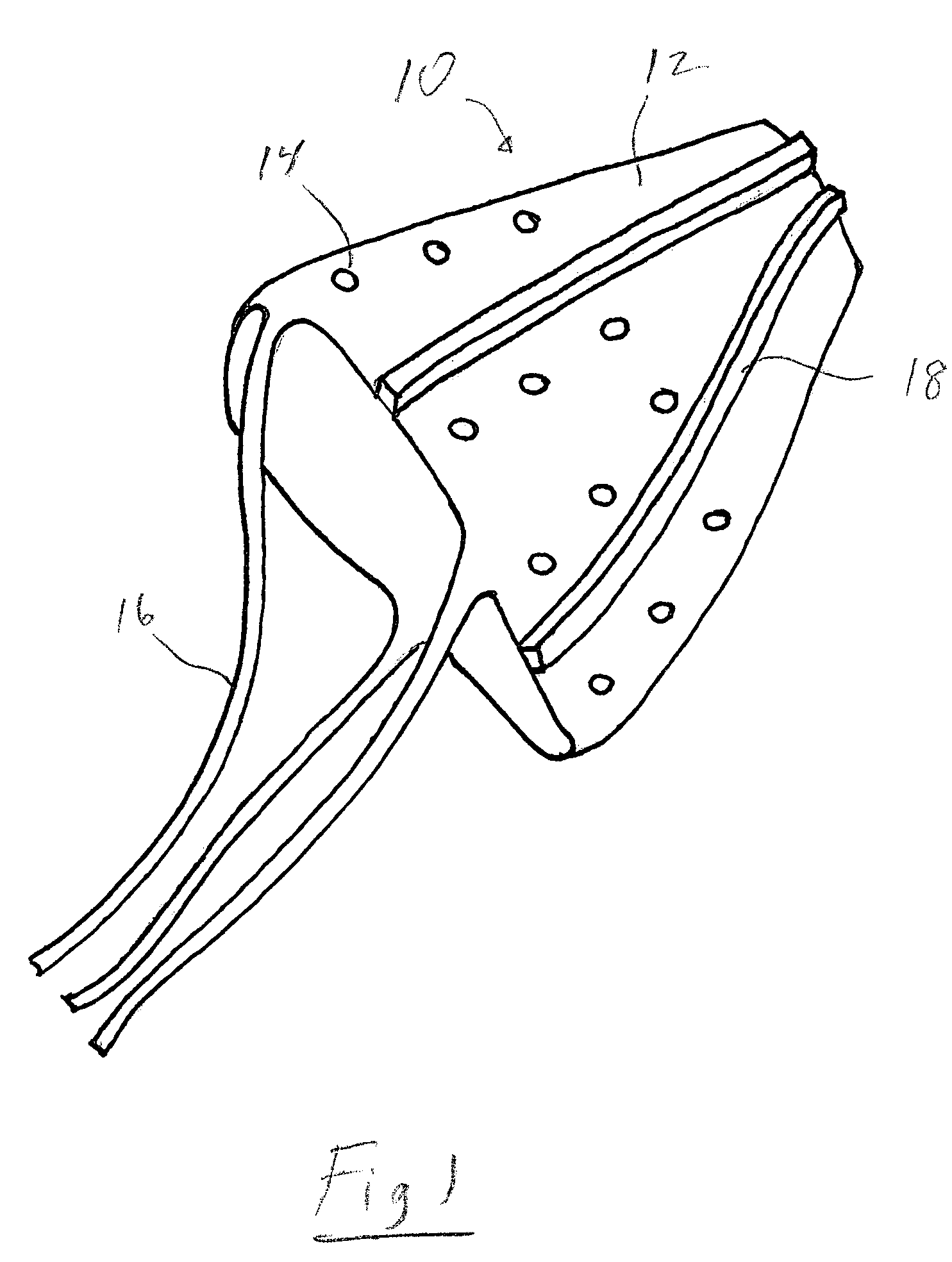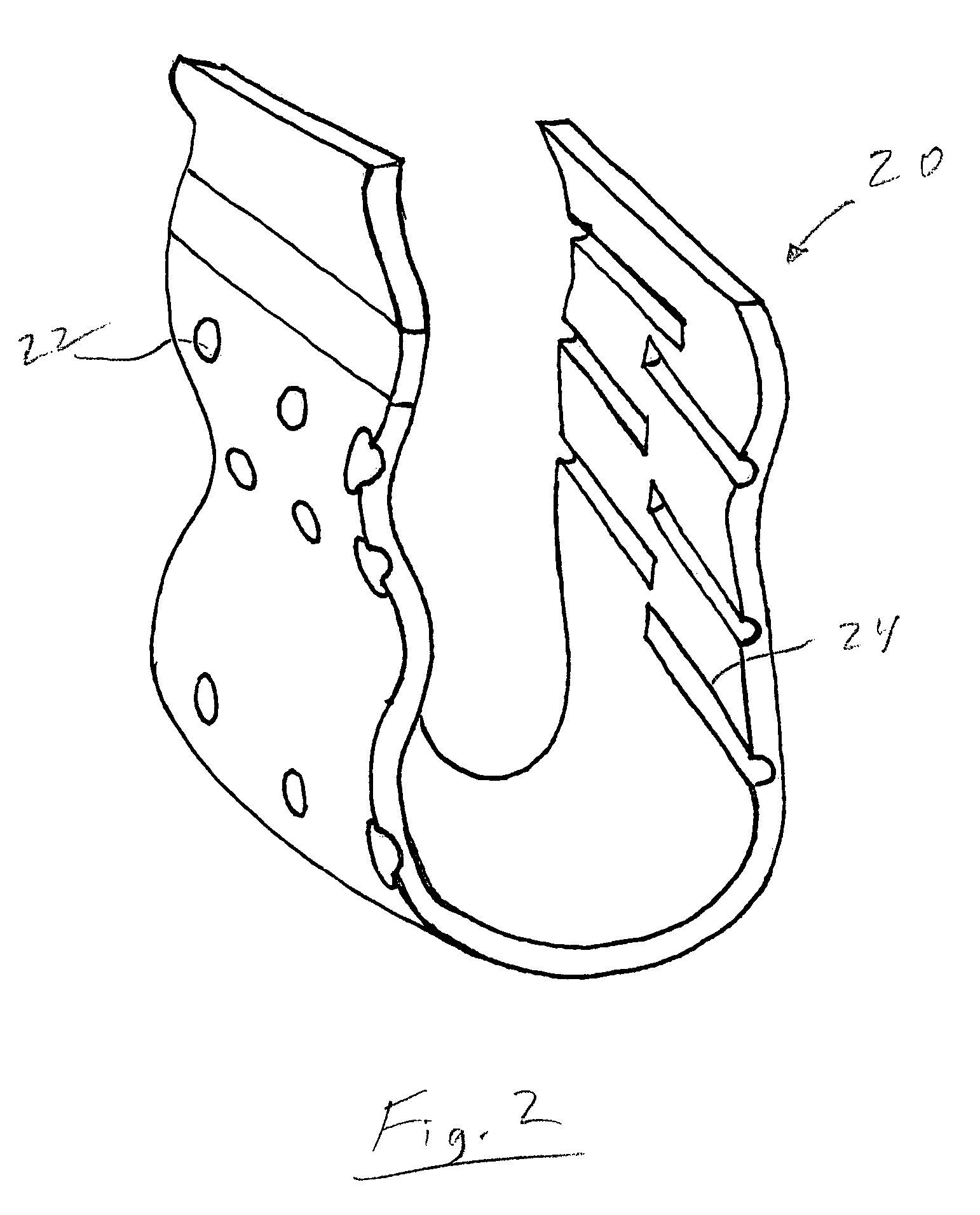Thin film intrauterine device
a thin film, intrauterine technology, applied in the direction of contraceptive devices, female contraceptives, etc., can solve the problems of reducing the effectiveness of contraception, increasing the possibility of compromising the sterile field, and manual placement of the iud in the insertion tube, so as to reduce the cost of manufacture, less intrusive, and easy to insert and remov
- Summary
- Abstract
- Description
- Claims
- Application Information
AI Technical Summary
Benefits of technology
Problems solved by technology
Method used
Image
Examples
Embodiment Construction
[0017]The contraceptive devices of the invention are comprised of thin films of a shape memory alloy (SMA), such as TiNi (also known as Nitinol). TiNi thin film is ˜5 microns thick and has shape memory at human body temperature. At lower temperatures, the material is in its martensitic state, is highly ductile, and can withstand large deformations. At higher temperatures, such as that of the human body, the material undergoes a phase transformation to a more rigid austenitic state in which it is not easily deformed.
[0018]The contraceptive thin film IUD is a micro-fabricated three-dimensional object. FIG. 1 shows generally at 10 a thin film IUD device of frusto-conical shape in accordance with one preferred embodiment of the invention. FIG. 2 shows generally at 20 a thin film IUD device in a generally U-shape in accordance with another preferred embodiment. The invention contemplates that many other three-dimensional geometric shapes can be used for the device as long as the portions...
PUM
| Property | Measurement | Unit |
|---|---|---|
| thickness | aaaaa | aaaaa |
| thick | aaaaa | aaaaa |
| temperatures | aaaaa | aaaaa |
Abstract
Description
Claims
Application Information
 Login to View More
Login to View More - R&D
- Intellectual Property
- Life Sciences
- Materials
- Tech Scout
- Unparalleled Data Quality
- Higher Quality Content
- 60% Fewer Hallucinations
Browse by: Latest US Patents, China's latest patents, Technical Efficacy Thesaurus, Application Domain, Technology Topic, Popular Technical Reports.
© 2025 PatSnap. All rights reserved.Legal|Privacy policy|Modern Slavery Act Transparency Statement|Sitemap|About US| Contact US: help@patsnap.com



